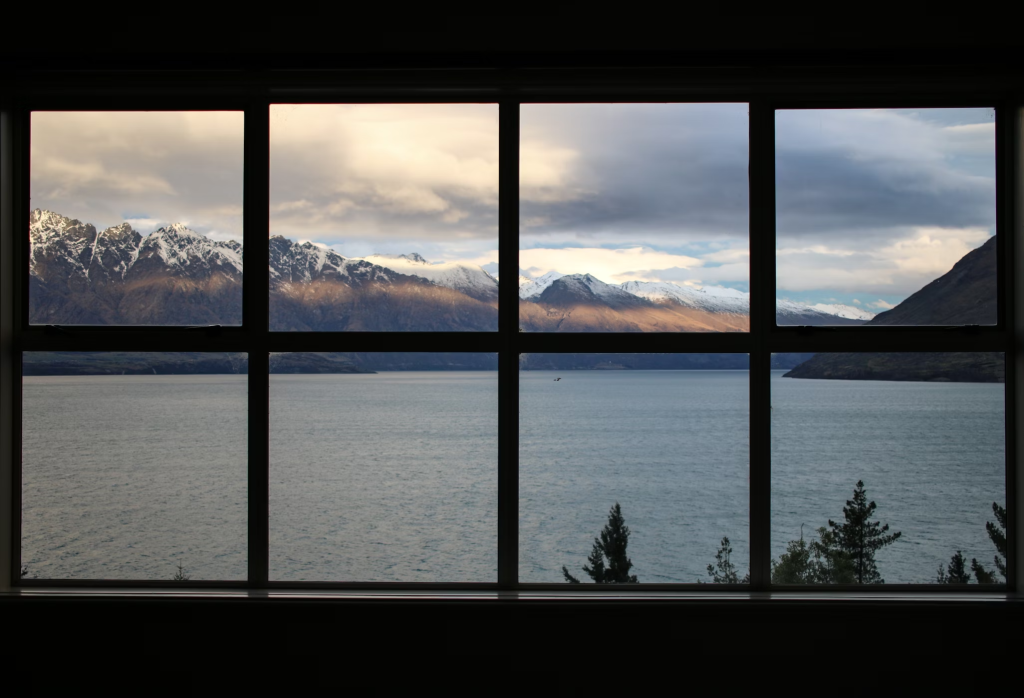Replacing windows in your home can be a significant investment. Whether you are upgrading your existing windows for aesthetic reasons, energy efficiency, or simply replacing damaged ones, the cost can vary widely based on several factors.

In Australia, as with most countries, various considerations influence the price of window replacement, including the type of window, material, size, installation complexity, and whether you hire a professional or attempt a DIY installation.
Understanding these factors can help you determine if replacement windows are truly more expensive than other home improvement options and if they provide value for your money.
Factors Affecting The Cost Of Replacement Windows
Type Of Window
The type of window you choose is one of the most significant factors in determining the overall cost. Replacement windows come in a variety of styles, such as single-hung, double-hung, casement, sliding, awning, and more.
Each type has its own cost associated with the materials, design, and installation requirements. For instance:
- Single-hung windows are one of the most affordable options, featuring a fixed top sash and a movable bottom sash.
- Double-hung windows have two movable sashes, making them slightly more expensive due to the added complexity and the fact that they offer better ventilation and easier cleaning.
- Casement Windows are hinged at the side and open outward, which typically makes them more expensive than single-hung or double-hung windows due to their design and operation.
- Awning Windows are hinged at the top and open outward, similar to casement windows but generally a bit more expensive than traditional sliding or single-hung styles.
Each of these window types comes in various sizes and configurations, all of which affect their price.
Window Material
The material used in your windows can significantly impact the cost. The most common materials used for window frames include:
- Timber: Wooden frames can provide a classic aesthetic but tend to be the most expensive option due to the high cost of the material and the need for regular maintenance, such as repainting and sealing. Timber windows also offer better insulation properties but are more prone to weathering, which can drive up long-term maintenance costs.
- Aluminium: Aluminium frames are known for their strength, lightweight, and durability. However, they are generally more affordable than timber windows. Aluminium windows can be powder-coated to withstand the elements, and they are a popular choice in modern Australian homes.
- uPVC (Unplasticised Polyvinyl Chloride): uPVC windows are another popular choice due to their affordability, low maintenance, and excellent thermal performance. They are also resistant to weathering, making them a cost-effective long-term solution for homeowners. However, uPVC can sometimes lack the aesthetic appeal of timber windows.
- Fibreglass: Fibreglass frames are extremely durable, energy-efficient, and require very little maintenance. They are generally more expensive than uPVC but can be a better long-term investment due to their longevity and energy efficiency.
The material of the window frame directly affects not only the upfront cost but also the lifespan and maintenance costs over time.
While timber and fibreglass windows may require more maintenance, materials like uPVC and aluminium tend to be lower-maintenance options that can save you money in the long run.
Window Size And Configuration
Larger windows or custom-designed windows will naturally cost more than standard-size windows. If you are replacing windows with custom shapes, sizes, or configurations, you can expect to pay a premium for the added labour and materials.
Similarly, multi-panel windows such as bay windows or those that involve intricate design elements or features such as double-glazing will also increase the cost.
Double-Glazing Vs. Single-Glazing
One of the most significant upgrades you can make to your windows is replacing single-glazed windows with double-glazed ones. Double-glazing offers superior insulation, both in terms of thermal performance and noise reduction, and can greatly improve the comfort of your home.
However, this upgrade does come with a higher price tag. Double-glazed windows are more expensive due to the additional layer of glass, the use of a gas (such as argon) between the panes for insulation, and the added complexity of installation.
Although the initial cost is higher, double-glazing can pay for itself over time through energy savings, as it helps reduce heating and cooling costs.
Energy Efficiency
Windows with advanced energy-efficient features can significantly reduce your heating and cooling costs, which is why they are becoming increasingly popular in Australian homes.
The technology used to improve energy efficiency includes low-E (low-emissivity) coatings, gas fills, and insulated frames. While these windows are more expensive upfront, the long-term savings on energy bills can make them an excellent investment.
Energy-efficient windows are designed to reduce the amount of heat that enters or escapes your home, making them ideal for Australia’s hot summers and chilly winters.
The cost of these windows depends on the features you select, such as double-glazing, Low-E glass coatings, and the type of frame material.
Labour Costs And Installation
The cost of professional installation can be significant. While some homeowners opt for a DIY installation to save money, hiring a professional is recommended for most window replacements, especially if you’re upgrading to more complex or custom windows.
Professional installers ensure that the job is done correctly, reducing the risk of costly mistakes that could lead to additional repairs down the track.
The complexity of the installation also plays a role in the overall cost. If the replacement windows are a non-standard size or require custom modifications to the existing window frame, installation could become more complicated and time-consuming, leading to higher costs.
On the other hand, if you are replacing windows like-for-like, installation may be more straightforward and less expensive.
Window Style And Aesthetics
Sometimes, the aesthetics of the windows can influence the overall price. For example, windows with elaborate details, such as colonial-style grilles, custom colours, or unique hardware, may cost more due to the added design and craftsmanship involved.
If your goal is to enhance your home’s curb appeal or to match specific architectural features, you might be willing to spend more on custom windows.
Age And Condition Of Existing Frames
If your existing window frames are in poor condition, the cost of replacing the windows may increase. Some window replacement projects require the removal of old window frames, which could involve extra labour and disposal fees.
If the frames are rotting, rusting, or otherwise damaged, the entire structure may need to be replaced, further driving up the costs.
Older homes may have structural issues that complicate the installation process. For instance, uneven walls or frames that no longer meet modern building codes could require additional work, making the project more expensive.
Geographic Location
In Australia, the cost of window replacement can also vary depending on where you live. Costs in metropolitan areas like Sydney, Melbourne, or Brisbane tend to be higher due to labour rates, the cost of materials, and the increased demand for home renovation services.
In more rural or regional areas, prices may be lower, but the availability of qualified installers and the cost of transporting materials could offset the savings.
Additional Costs
Finally, additional costs may arise during a window replacement project. Some common additional expenses include:
- Permits: Depending on your local council, you may need a permit for window replacement, especially if it involves altering the size or structure of the windows.
- Disposal Fees: If you are replacing a significant number of windows, you may incur costs for the disposal of the old windows and frames.
- Additional Work: If there are issues with the existing structure that need to be addressed, such as repairing rotten wood or fixing the frame, these costs should be factored into the overall price.
Are Replacement Windows Worth The Cost?
While the cost of replacement windows can be high, many benefits make it a worthwhile investment. Energy-efficient windows can significantly reduce your energy bills, while well-installed windows can increase the value of your home and improve its overall comfort.
In the long run, replacement windows can save you money on maintenance and repairs and provide a more enjoyable living environment.
Moreover, replacing old, drafty windows with new, high-quality models can boost your home’s curb appeal, making it more attractive to potential buyers if you plan to sell in the future. This can translate to a higher resale value, making the investment in new windows worthwhile.
Ultimately, the cost of replacement windows is determined by several factors, including the type of window, materials, size, installation complexity, and location.
While they can be more expensive than some other home improvements, their long-term benefits make them an attractive option for homeowners looking to improve energy efficiency, aesthetics, and comfort.
Conclusion
Replacing windows can indeed be more expensive, but it’s often a smart choice for homeowners who are seeking to enhance their living spaces.
By carefully considering factors such as window type, material, energy efficiency, installation, and geographic location, you can make a more informed decision about whether the investment is right for you.
While the upfront cost may be higher, the benefits of lower energy bills, increased property value, and improved home comfort often make replacement windows a worthwhile expenditure in the long term.
Frequently Ask Question
What Are The Benefits Of Double-Glazing In Windows?
Double-glazing improves energy efficiency by reducing heat transfer, keeping your home warmer in winter and cooler in summer. It also minimizes outside noise, enhancing indoor comfort.
Double-glazed windows reduce condensation, which helps prevent mould and improve air quality. They may have a higher upfront cost but can significantly lower energy bills over time. Additionally, they enhance the overall value and appeal of your home.
Do Replacement Windows Require Permits In Australia?
In some cases, permits are required for window replacement in Australia, especially if the project involves structural changes or altering the size of the windows. Check with your local council to determine the specific regulations in your area.
Failing to obtain a permit when required can lead to fines or complications during property inspections. Hiring a professional installer familiar with local building codes can help ensure compliance.
How Can I Reduce The Cost Of Window Replacement?
To reduce costs, choose standard-sized windows instead of custom designs, and consider energy-efficient but affordable materials like uPVC. Opting for single-hung or sliding windows can also save money compared to more complex styles like casement or awning windows.
Replacing windows during off-peak seasons may help secure lower labour rates. Additionally, getting multiple quotes from professional installers can help you find competitive pricing. Balancing cost with quality ensures long-term value for your investment.
Click Window Replacement Adelaide For More Details
